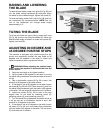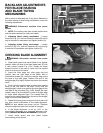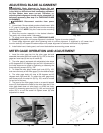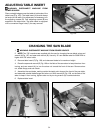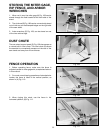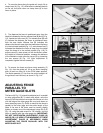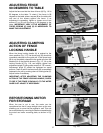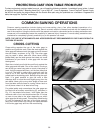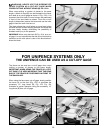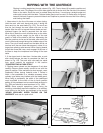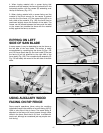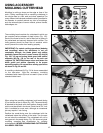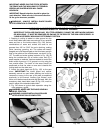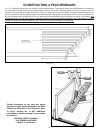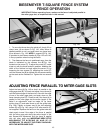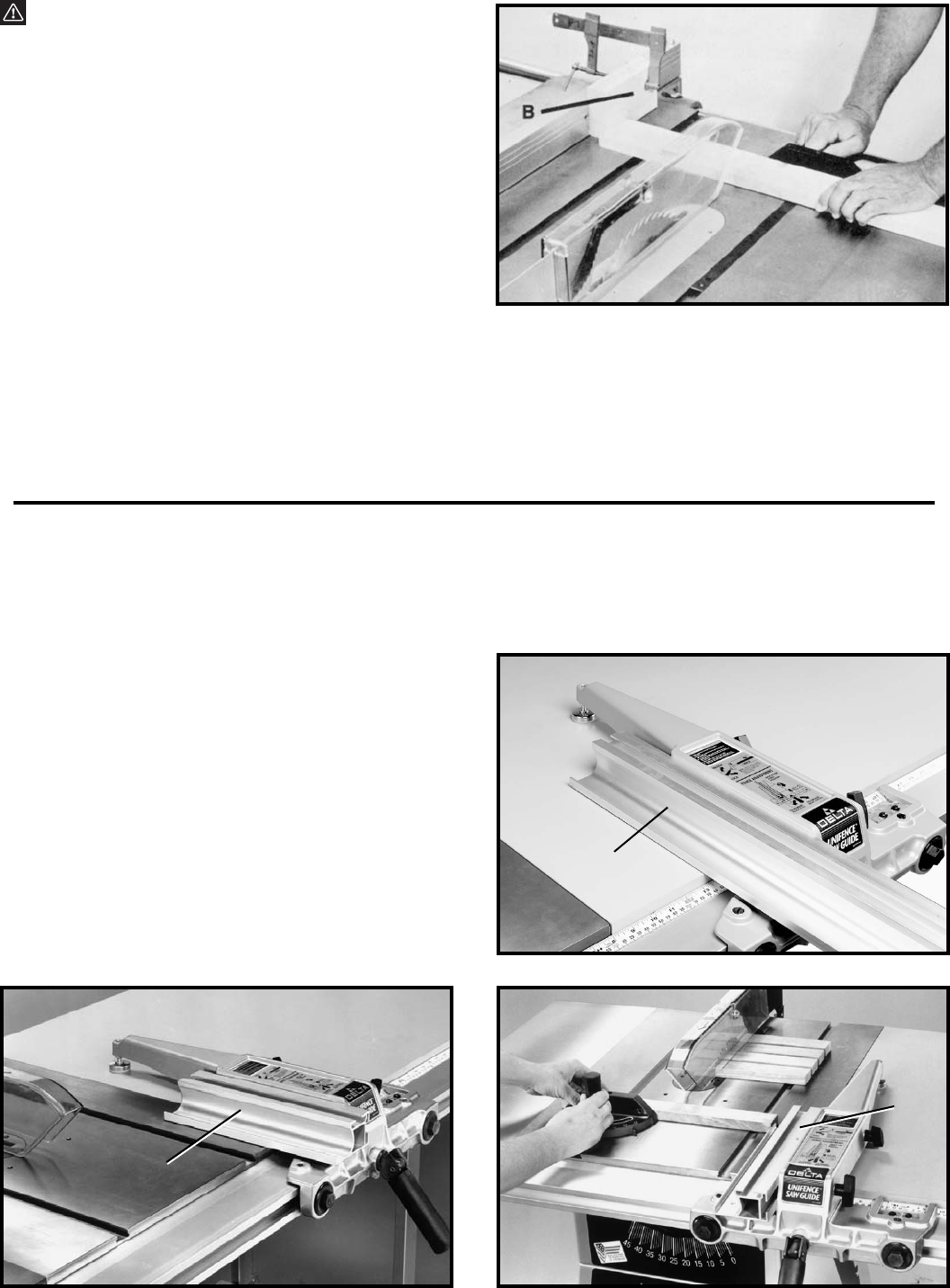
Fig. 121A
39
WARNING: NEVER USE THE BIESEMEYER
FENCE SYSTEM AS A CUT-OFF GAGE WHEN
CROSS-CUTTING WITHOUT USING (B) FIG. 121A.
When cross-cutting a number of pieces to the same
length, a block of wood (B) can be clamped to the fence
and used as a cut-off gage as shown in Fig. 121A. It is
important that this block of wood always be positioned
in front of the saw blade as shown. Once the cut-off
length is determined, secure the fence and use the miter
gage to feed the work into the cut.
This block allows the cut-off piece to move freely along
the table surface without binding between the fence and
the saw blade, thereby eliminating the possibility of
kickback and injury to the operator.
IMPORTANT: When using the block (B) Fig. 121A, as a cut-
off gage, it is very important that the rear end of the block be
positioned so the work piece is clear of the block before it
enters the blade.
Fig. 122
The fence can be used as a cut-off gage when cross
cutting a number of pieces to the same length.
IMPORTANT: WHEN USING THE FENCE AS A CUT-
OFF GAGE, IT IS VERY IMPORTANT THAT THE REAR
END OF THE FENCE BE POSITIONED IN FRONT OF
THE SAW BLADE.
When using the fence as a cut-off gage, simply position
the fence (A) to the front (Fig. 122), or purchase the
accessory 12″ long fence (B), Fig. 123. Fig. 124
illustrates a typical operation using the accessory 12″
long fence (B) as a cut-off gage.
Fig. 124Fig. 123
A
B
B
FOR UNIFENCE SYSTEMS ONLY
THE UNIFENCE CAN BE USED AS A CUT-OFF GAGE



